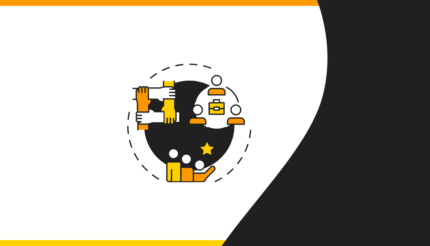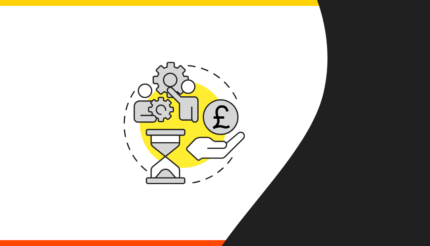
In the fast-paced world of entrepreneurship, one of the most common challenges businesses face is the feast and famine cycle. This cycle, characterised by fluctuating periods of high sales activity followed by a downturn in sales activity to focus on delivering the work you have just won.
In this newsletter we’ll delve deeper into the dynamics of the feast and famine cycle and explore strategies to break free from its grip, paving the way for scalable growth without you having to work 100 hours per week.
Understanding the Feast and Famine Cycle:
The feast and famine cycle is a phenomenon that plagues many businesses owners, regardless of their business size or industry.
At its core, this cycle starts with a downturn in work for whatever reason (famine) which drives a period of intense activity to get work more work in (the feast) followed by a period of stagnation in sales activity to complete the work, ultimately leading to another downturn (famine) once that work has been completed, then it’s back to all hands on deck getting new business in (back to feast) and then we switch back to doing the work (back to famine) and so the cycle continues for the next decade or until you burnout or get fed up and give up.
This rollercoaster ride can wreak havoc on business owners, causing stress, burnout, and financial instability.
Root Causes of the Feast and Famine Cycle:
Several factors contribute to the perpetuation of the feast and famine cycle within businesses:
- Reactive Approach: Many businesses operate in a reactive mode, scrambling to secure new projects when business is slow and then becoming overwhelmed when the workload increases suddenly.
- Lack of Strategic Planning: Without a clear strategic plan in place, you may find yourself drifting aimlessly, unable to anticipate and mitigate the cyclical nature of demand.
- Over Reliance on Individual Efforts: In some cases, you may be relying too heavily on the efforts of individual team members, such as you as the business owner, to drive both sales and operations. This can lead to bottlenecks and inefficiencies.
- Inadequate Marketing Strategies: Poorly executed marketing efforts can exacerbate the feast and famine cycle by failing to generate a consistent flow of leads and prospects into your business.
Strategies to Break Free from the Cycle:
Breaking free from the feast and famine cycle requires a proactive and strategic approach. Here are some key strategies for you to consider:
1. Functional Separation Of Your Sales and Operations:
In order to delve deeper into the concept of functional separation, it’s essential to understand how integrating sales and operations can contribute to the feast and famine cycle. When sales and operations are intertwined, the business becomes susceptible to sudden shifts in workload. For instance, during slow periods, there may be a rush to secure new projects, leading to overcommitment and resource strain. Conversely, when the workload increases, the focus shifts entirely to completing existing projects, leaving little time or energy for you to devote to acquiring new business.
By establishing dedicated teams for sales and operations, you can create a more balanced and sustainable workflow. Your sales teams can focus exclusively on prospecting, lead generation, and client acquisition, without being bogged down by operational concerns. On the other hand, your operations teams can concentrate on delivering high-quality products or services, meeting deadlines, and ensuring client satisfaction. This separation of responsibilities not only enhances your business’ efficiency but also reduces the risk of burnout and exhaustion among your team members – including you!
Furthermore, functional separation allows your business to scale more effectively. With clearly defined roles and responsibilities, it becomes easier for you to hire and onboard new team members as your business grows. Your Sales teams can expand their outreach efforts, while your operations teams can scale their production capacity without being hindered by conflicting priorities. Ultimately, this leads to smoother operations, happier employees, and greater long-term success for you and your business.
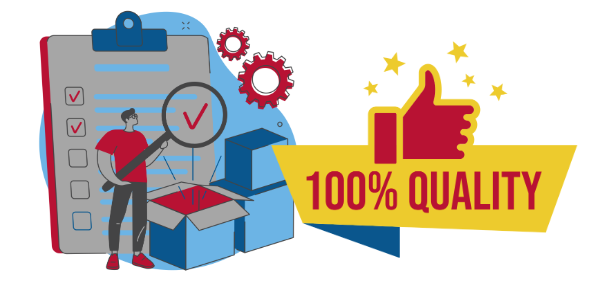
2. Empowerment of Your Managers:
Empowering your managers to oversee sales and operations is a critical component of breaking free from the feast and famine cycle. Effective managers serve as the linchpin between strategy and execution, ensuring that your business objectives are met efficiently and effectively. However, not all managers are created equal, and it’s essential for you to invest in the right talent to lead each department.
When selecting managers for sales and operations roles, you should look for individuals with strong leadership skills, strategic vision, and a track record of success in their respective fields. These individuals should be given the autonomy and authority to make decisions, solve problems, and drive performance within their teams. By empowering managers to take ownership of their areas of responsibility, your businesses will develop a culture of accountability and excellence and begin to run on autopilot.
In addition to empowerment, ongoing support and development are essential for your managers. You should provide your managers with the resources, training, and mentorship they need to excel in their roles. You must encourage open communication, feedback, and collaboration. By investing in the growth and development of your managers, you invest in the future of your business.
3. Diversification of Revenue Streams:
Diversifying revenue streams is another key strategy for breaking free from the feast and famine cycle. If you rely on a single source of revenue you leave your businesses vulnerable to external shocks and fluctuations in demand. By expanding into new markets, offering additional products or services, or targeting different customer segments, your businesses can reduce its reliance on any one source of income.
One approach to diversification is horizontal expansion, where businesses seek to broaden their offerings within the same market or industry. For example, a software company may expand its product line to include complementary software solutions or add-ons. This allows your business to cross-sell to existing customers and capture a larger share of their wallet.
Vertical expansion is another option, where businesses seek to expand their presence along the value chain. For instance, a manufacturer may choose to integrate backward by acquiring suppliers or forward by entering new distribution channels. This vertical integration allows your businesses to capture more value and control over the entire production process.
In addition to expanding horizontally and vertically, your business can also explore diversification through geographic expansion. This may involve entering new markets or regions, either domestically or internationally. By tapping into new customer bases and market opportunities, your businesses can reduce its dependence on any single market or economy.
Overall, diversification of revenue streams is essential for you to build resilience and stability in the face of economic uncertainty. By spreading risk across multiple sources of income, your business can weather downturns more effectively and by doing so you position yourself for long-term growth and success.
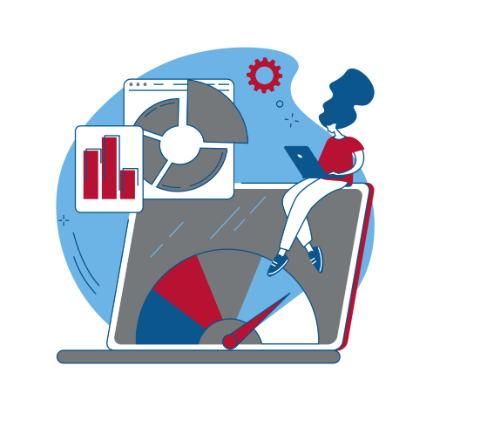
4. Investment in Marketing:
Expanding on the importance of investing in marketing, it’s crucial to recognise that effective marketing is the lifeblood of any business. It’s not enough to simply have a great product or service; you need to ensure that your target audience knows about it. However, many businesses fall into the trap of viewing marketing as an expense rather than an investment, leading to insufficient allocation of resources and missed opportunities.
To break free from the feast and famine cycle, businesses must prioritise marketing. This involves allocating sufficient budget, time, and talent to develop and execute a comprehensive marketing strategy. A well-crafted marketing plan should encompass a mix of short-term, medium-term, and long-term initiatives across various channels to reach and engage with your target audience effectively.
Short-term marketing strategies may include tactics such as email campaigns, paid digital or direct outreach which are all designed to generate immediate results. These tactics can help drive short-term revenue and fill gaps during slow periods, providing a much-needed boost to cash flow.
Medium-term marketing strategies focus on building brand awareness, credibility, and trust over time. This may involve content marketing, search engine optimisation (SEO), or public relations efforts aimed at positioning your business as an industry leader and attracting high-quality leads.
Long-term marketing strategies involve investing in initiatives that have a more sustained impact on business growth and profitability. This may include building a robust brand identity, investing in thought leadership, or developing strategic partnerships that yield long-term benefits.
By diversifying your marketing efforts across short-term, medium-term, and long-term strategies, you can create a more stable and resilient marketing ecosystem. This ensures that you’re not overly reliant on any single tactic or channel, reducing the risk of being adversely affected by changes in market conditions or consumer behaviour.
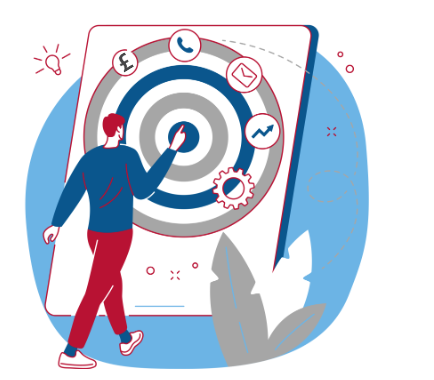
5. Standardisation of Processes:
Delving deeper into the standardisation of processes, it’s essential to recognise the role that operational efficiency plays in breaking free from the feast and famine cycle. When processes are standardised and streamlined, businesses can operate more efficiently, reduce waste, and deliver consistent results.
Standardising processes involves documenting and codifying best practices across all aspects of your business, from sales and marketing to operations and customer service. This ensures that everyone in your organisation is following the same procedures and protocols, leading to greater efficiency and productivity.
Automation tools and technologies can also play a crucial role in standardising processes and increasing operational efficiency. By automating repetitive tasks and workflows, your business can free up time and resources to focus on more value-added activities, such as strategic planning, innovation, and customer engagement.
In addition to standardising internal processes, your should also focus on optimising external processes, such as supply chain management and vendor relationships. By collaborating closely with suppliers and partners, businesses can streamline operations, reduce costs, and improve overall efficiency.
Continuous improvement is another key aspect of standardisation, whereby businesses regularly review and refine their processes to identify areas for optimization and enhancement. This involves soliciting feedback from employees, customers, and other stakeholders, analysing performance metrics, and implementing changes as needed to drive continuous improvement.
By standardising processes and embedding a culture of continuous improvement, your business will become more efficient, reduce costs, and deliver superior products and services to your customers. This not only helps break free from the feast and famine cycle but also lays the foundation for sustainable growth and long-term success for you and your business.

6. Focus on Customer Retention:
Expanding on the importance of customer retention, it’s essential to recognize that acquiring new customers is typically more costly and time-consuming than retaining existing ones.
Therefore, your business must prioritise building strong relationships with your customers and delivering exceptional service to encourage loyalty and repeat business.
Customer retention starts from the moment a prospect first interacts with your business and continues throughout the entire customer lifecycle. It’s about exceeding customer expectations at every touchpoint, from the initial sale to post-purchase support and beyond.
One way to improve customer retention is to provide personalised experiences and tailored solutions that address the unique needs and preferences of each customer. This may involve segmenting your customer base and creating targeted marketing campaigns or offering customised products or services.
Another effective strategy for customer retention is to invest in customer service and support. By providing prompt, responsive, and knowledgeable support, your business can build trust and confidence with your customers, leading to increased loyalty and satisfaction.
In addition to providing exceptional service, businesses can also incentivise repeat business through loyalty programs, discounts, or exclusive offers for existing customers. These incentives not only encourage repeat purchases but also help strengthen the bond between the customer and the brand.
Finally, you should actively seek feedback from customers and use it to improve products, services, and processes continuously. By listening to customer concerns, addressing issues promptly, and incorporating feedback into decision-making, businesses can demonstrate their commitment to customer satisfaction and retention.
By focusing on customer retention, your business can reduce churn, increase customer lifetime value, and create a loyal and enthusiastic customer base. This not only helps break free from the feast and famine cycle but also lays the foundation for sustainable growth and long-term success.

Conclusion:
Breaking free from the feast and famine cycle requires a holistic approach that addresses the root causes of the cycle and implements strategies to promote stability, resilience, and growth.
By prioritising functional separation, empowering managers, diversifying revenue streams, investing in marketing, standardising processes, and focusing on customer retention, your business can create a more balanced and sustainable business model that can withstand the ups and downs of the market.
It’s essential to recognise that breaking free from the feast and famine cycle is not a one-time effort but an ongoing process that requires commitment, adaptability, and continuous improvement. By embracing change, fostering innovation, and staying focused on long-term goals, businesses can position themselves for success and prosperity in the years to come.
So, take the first step today towards building a stronger, more sustainable business for tomorrow.
If you would like to book in a call with me click here Free Session
Events
PS: We have a bunch of events coming up over the next few months covering everything to do with Mastering your Business Growth and making your business work without you, so you can focus on the other important things, like life and family etc.
We go deep on topics like finance, marketing, sales, time management, recruitment and we would love to see you there.
To check out when our next event is visit our events page by clicking here.
PPS: if you have any questions feel free to reach out to me at lukekay@actioncoach.co.uk I love helping business owners work through tough challenges and quite often the solution is a quick fix if you know where to look.
PPPS: If you feel that this article is valuable to you and could help others within your business network, please share and let’s spread the knowledge.
Have an amazing day and thank you for taking the time to read this blogpost.


